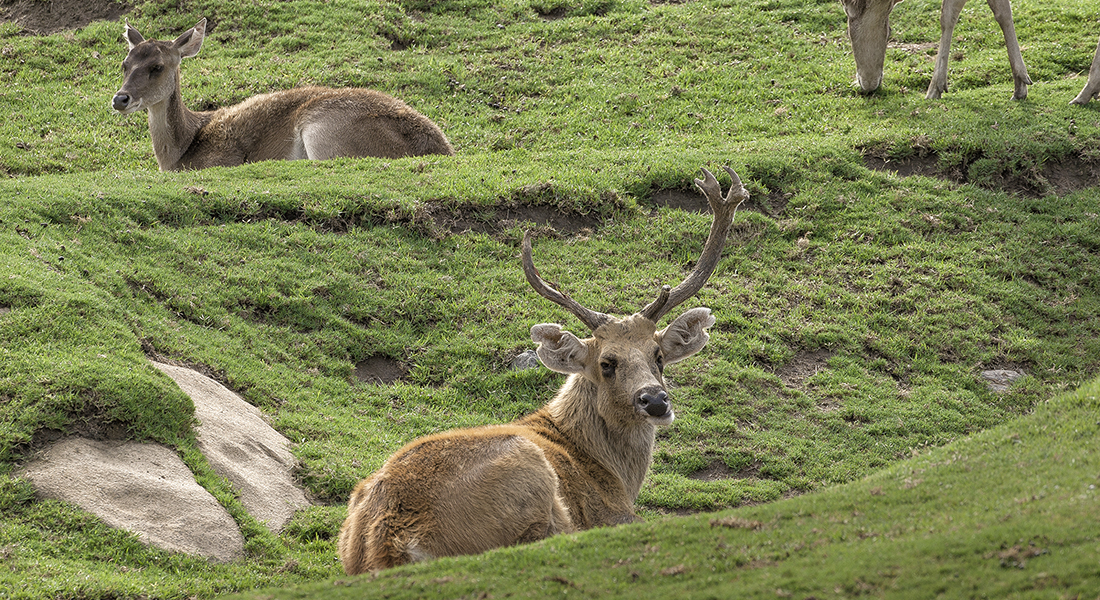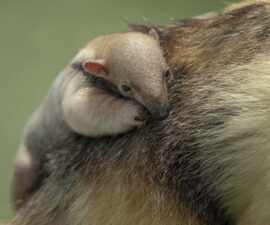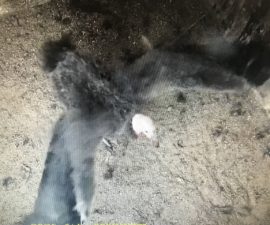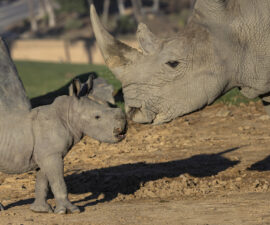While Rudolph and Bambi may have been many people’s introduction to deer, humankind’s connection to the family Cervidae can be traced back to the cave paintings at Lascaux and prehistoric times. Comprising more than 90 species, deer exist in a range of shapes and sizes and can be found in different habitats—and not just at the North Pole or on the range!
BY Peggy Scott
Photography by Ken Bohn
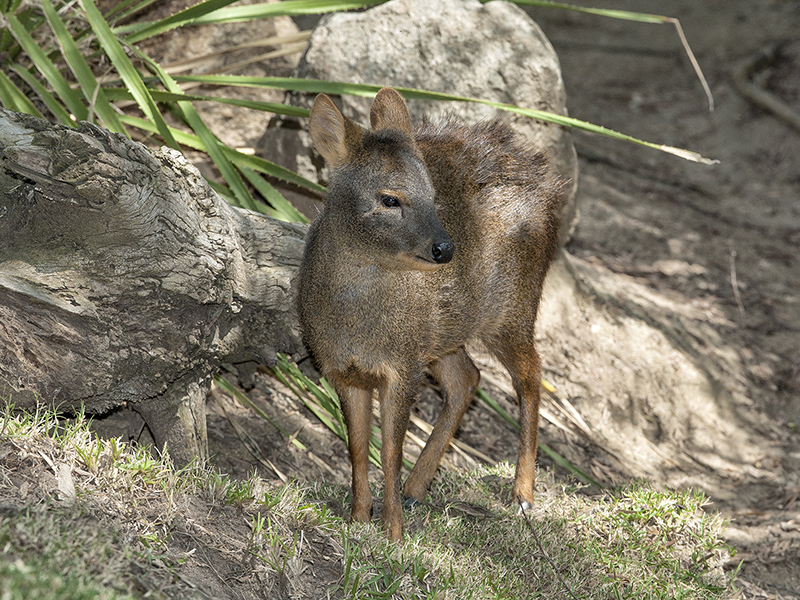
THE PINT-SIZED PUDU
With its low-slung, rounded form, the southern pudu is built for slipping through dense forest undergrowth.
Around the world, deer make their homes in regions of North Africa, Eurasia, North America, and southern Mexico, on every continent except Australia and Antarctica. Most live in forested habitats, but some species inhabit grasslands, swamps, arid scrublands, mountains, or even tundra. The deer family, Cervidae, is a big one, and the annual reunion would be something to see: it would include 12 species of muntjac, 18 species of Old World deer, 3 species of roe deer, moose, and 19 species of New World deer. The largest is the moose Alces americanus, with adult males weighing as much as 1,500 pounds. At the other end of the scale is the southern pudu Pudu pudu, which would barely tip one at an average weight of 22 pounds. These mammals possess a range of traits and characteristics, and oh “deer,” are they interesting.
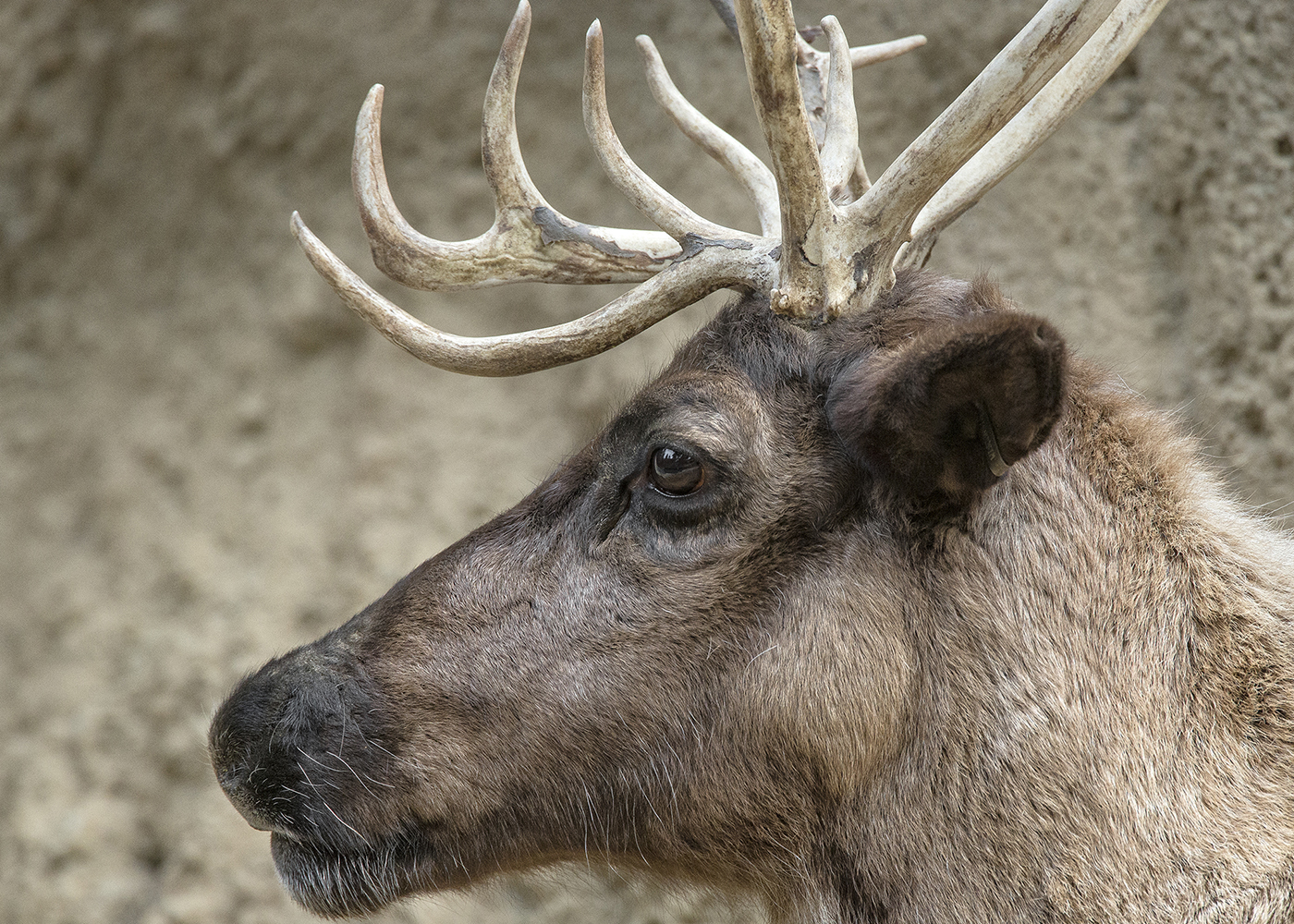
Know a Deer
Given their general shape and physical characteristics, it’s easy to see why deer and antelope (a bovid subfamily called Antilopinae) are often subject to mammalian mistaken identity. Both are hairy, four-legged, even-toed ungulates (hooved animals); and they’re both ruminants, meaning they “chew their cud,” regurgitating and rechewing their food. That last trick comes courtesy of their four-chambered stomachs, and a digestive system that allows them to survive on a diet of leaves, grass, and other plant material.
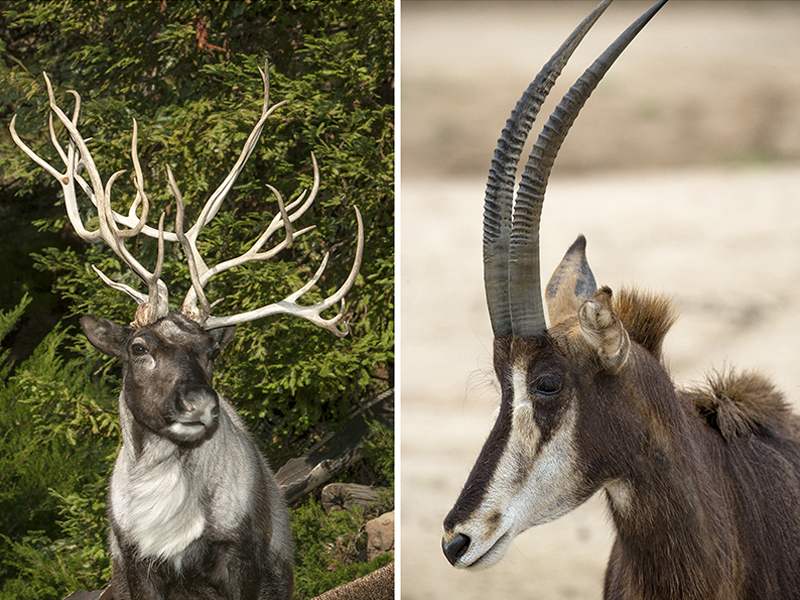
HEAD OF THE CLASS
Male deer, like the reindeer pictured above at left, grow antlers which are shed and grown back yearly. Antelope, both male and female, sport permanent horns.
One of the major defining differences between deer and antelope, however, is as plain as the nose on their face—or, rather, the growths on top of their heads! Male deer have antlers, which they shed and grow back every year, while antelope sport horns that are permanent, and both males and females grow them. The exception? Reindeer—both sexes grow and shed antlers each year. The shape of the adornments is also different: deer antlers become more branched as the male animal matures, and antelope horns do not branch out.
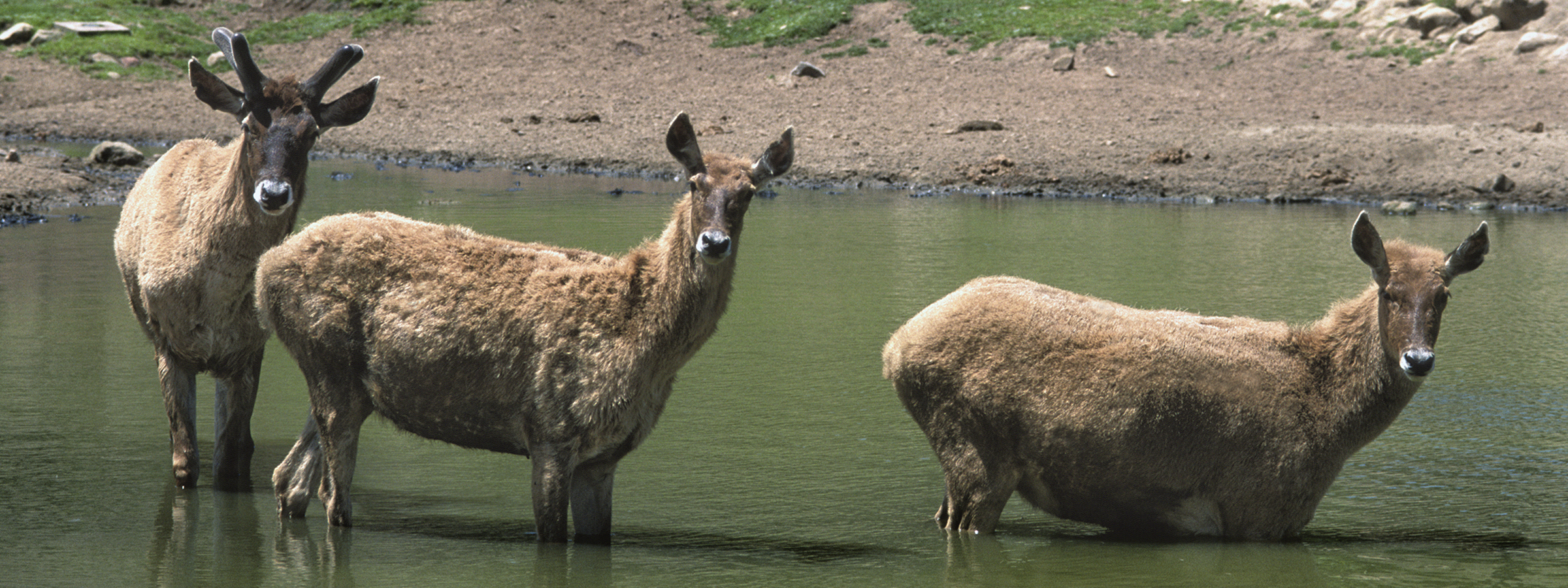
Bucks and Bulls? No Kidding!
In the deer world, size, area of origin, and gender help determine what an animal is called. For most types of deer (in modern English usage), a male is a buck and a female is a doe. However, the terms vary with dialect, and according to the size of the species. For instance, the male red deer Cervus elaphus is a stag, while for other large species the male is a bull and the female a cow. The offspring of smaller species (think tufted deer Elaphodus cephalophus) is a fawn, while the young of large species (white-lipped or Thorold’s deer Przewalskium albirostris, for example) is a calf. And the baby of a very small species (such as a western roe deer Capreolus capreolus) is a kid!
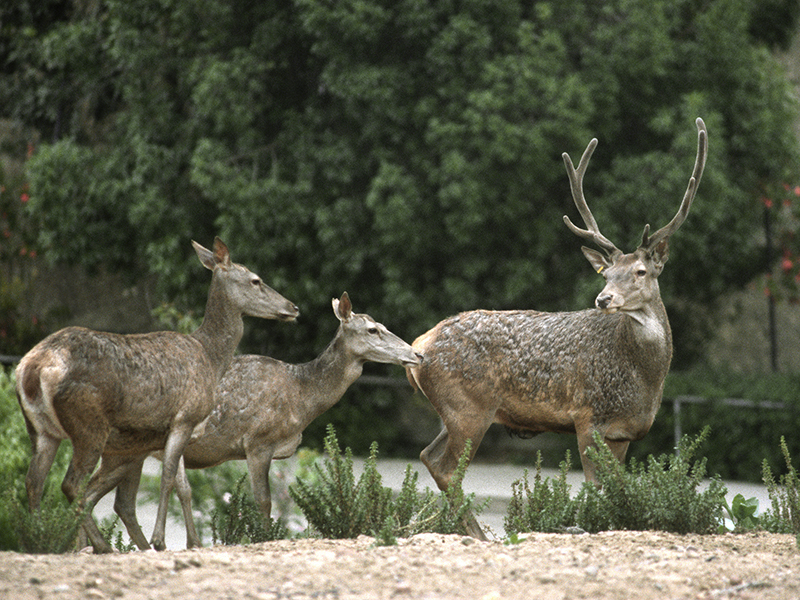
OUT OF AFRICA
Like most deer species, only male Barbary red deer, like the one here on the right, grow antlers. The Barbary red deer is the only deer species native to Africa.
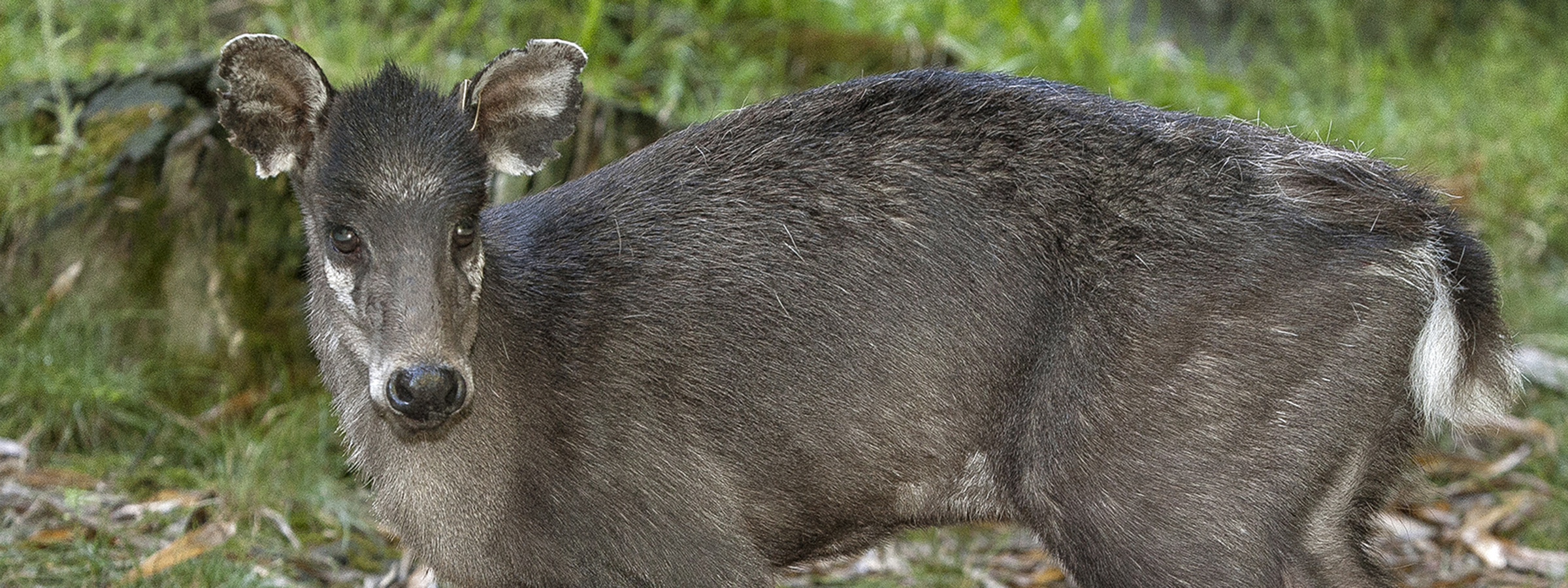
Home, Home at the Zoo
The San Diego Zoo is home to three deer species. This includes one of the most well known: the Siberian reindeer Rangifer tarandus sibericus. Found in tundra, northern forests, and mountain uplands from western Alaska through Canada to western Greenland, and in northern Europe and northern Asia, the reindeer is the only species of deer in which both males and females grow antlers. These hardy animals are also called caribou.
Another deer at the Zoo is the chocolate-brown-colored western tufted deer Elaphodus cephalophus (seen above), which is native to the mountain forests and high valley jungles of Myanmar and southern and central China. Its spiky hairdo is attention-getting, as are its small, fang-like canine teeth, which peek out of its mouth.
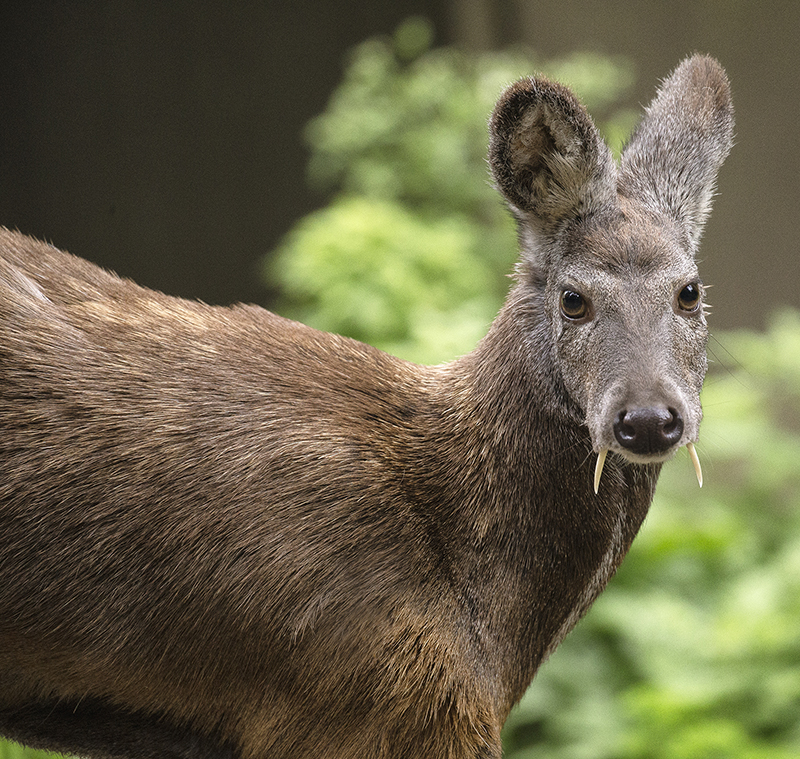
“FANG”TASTIC DEFENSE
The male Siberian musk deer’s impressive, fang-like canine teeth are quite useful when sparring over females or territory.
Sometimes referred to as the “vampire deer” because of the pronounced development of its tusk-like canines, the Siberian musk deer Moschus moschiferus (seen above) lives in Russia and China, and on the Korean Peninsula. It eats grass, moss, tree leaves, and sprouts in mountain forests. As the name indicates, males of this species produce a waxy secretion called musk to attract females. Unfortunately, humans recognize this smell as well, and have used it to find and hunt the Siberian musk deer to the brink of extinction, as well as harvesting that musk for the perfume industry.
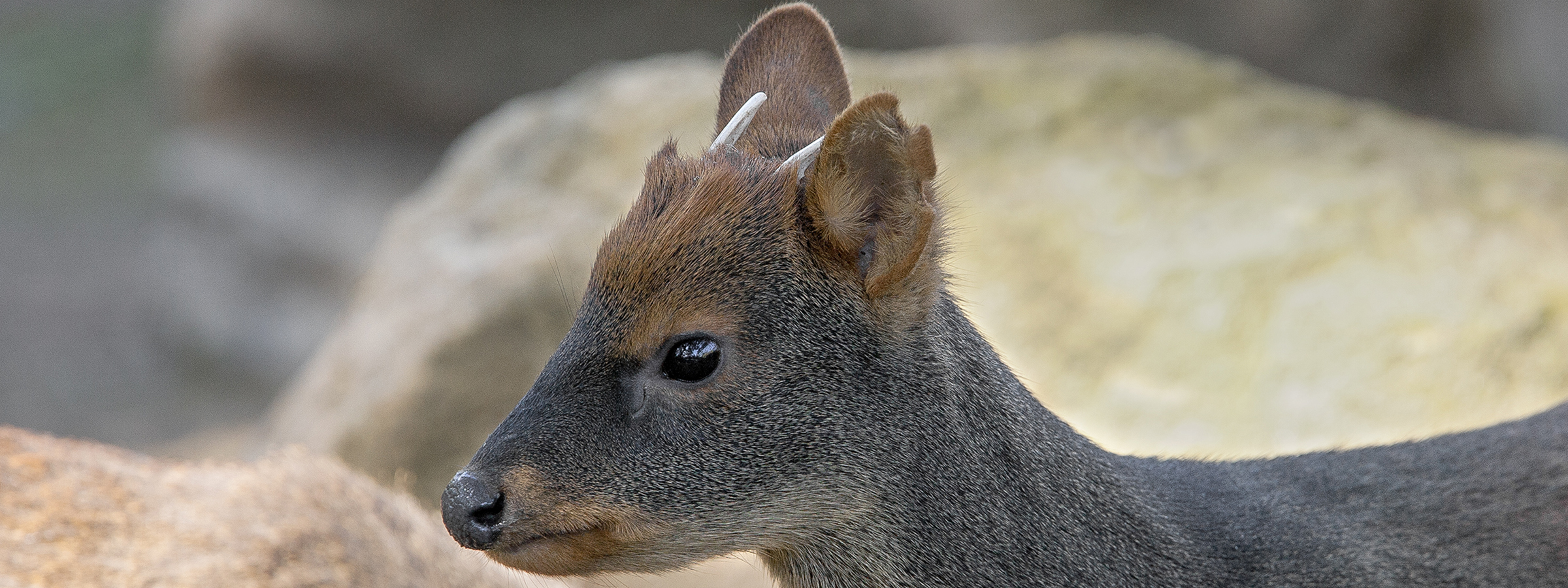
Playing at the Park
The Safari Park’s vast field exhibits are home to several deer species, including two that are endangered or threatened. One of the smallest deer species in the world is the southern pudu Pudu pudu (seen above). While their diminutive size makes them endearing, it’s also the reason this little deer is prey for so many other animals, like cougars, foxes, eagles, and even owls. Making their home in the dense forests of Chile and Argentina, pudu find their food close to the ground, including fallen fruit, leaves, twigs, and lower branches of trees.
Eld’s deer Rucervus eldii (also known as the Burmese thamin or brow-antlered deer) is indigenous to Southeast Asia. It has seen its population cut in half over the past 15 years, which can be traced to both loss of habitat and the animal’s habit of living in open grasslands near water. Also calling the Park home are western tufted deer; Barbary red deer Cervus elaphus barbarus (or the Barbary stag), which is the only deer species native to Africa; and two types of small- to medium-size sika Cervus nippon, the Mandarin and Indochinese. Full-grown male sika (pronounced “see-ka”) can range in weight from 150 to 240 pounds. Most of the females weigh 70 to 100 pounds.
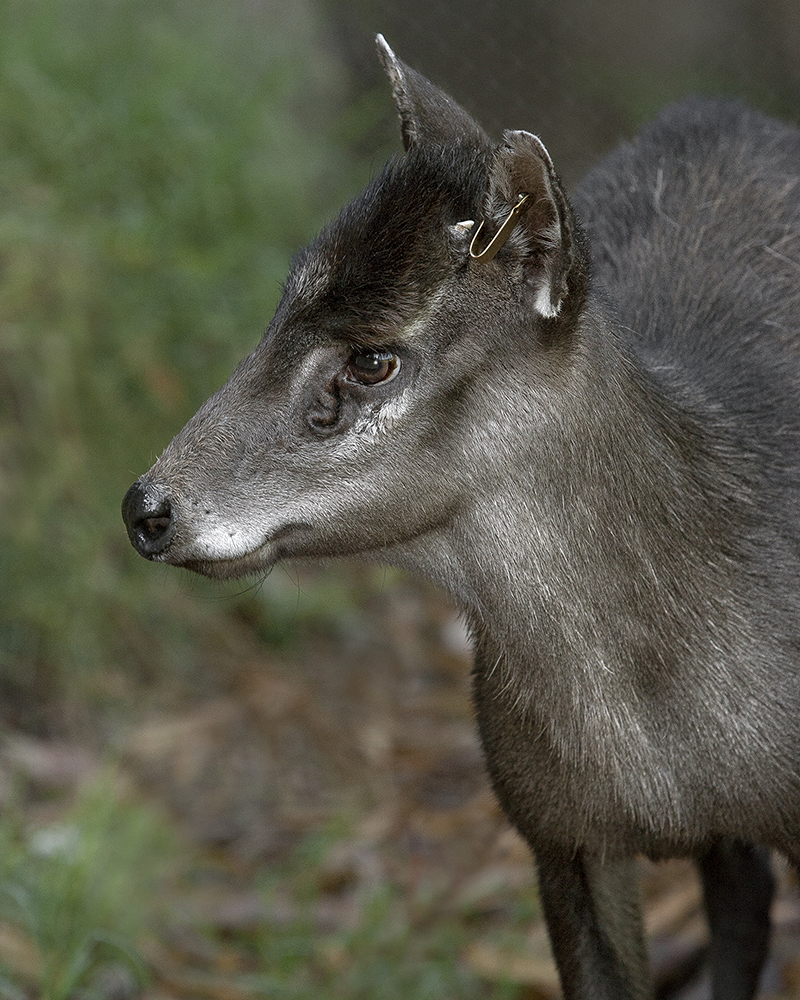
TRADEMARK TRESSES
The western tufted deer’s common name refers to the thick, black patch of hair on the animal’s forehead.
The semiaquatic Père David’s deer Elaphurus davidianus, native to the subtropics of China, is recovering from the threat of extinction, but is still considered critically endangered. Called both the white-lipped deer and Thorold’s deer Cervus albirostris, this large, Tibetan deer can be identified by its prominent white muzzle and the male’s impressive antlers, which can weigh up to 15 pounds each! One of the most vulnerable species of Indian deer, the swamp deer or barasingha Rucervus duvauceli can also be seen at the Park. Found only in the wild in protected sanctuaries, this marsh-dwelling deer can trace its name to its large antlers. An adult male swamp deer has huge antlers, and in Hindi, barasingha means “12-antlered deer.”
The Indian sambar deer Rusa unicolor sports simple, three-tined antlers. While their antlers may be basic, their palates are quite developed—the animal is reported to eat between 130 and 180 different plant species! The Malayan sambar, found in Sumatra, is quite the hardy herbivore. Like its cousin the Indian sambar deer, the Malayan sambar will attack sizeable predators to fend them off, and prefers to hold confrontations in shallow water, where it has an advantage: it has splayed hooves that keep it from slipping.
It would take many trips to many places around the world to see these unusual deer species. Or you can just visit the San Diego Zoo and Safari Park, where it’s easy to see—and say—“Oh my deer!”

